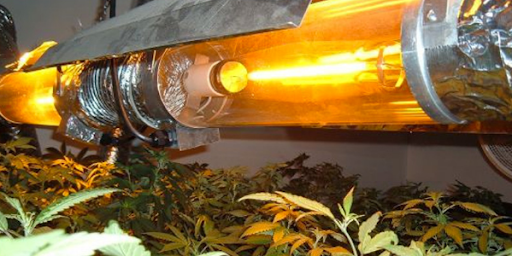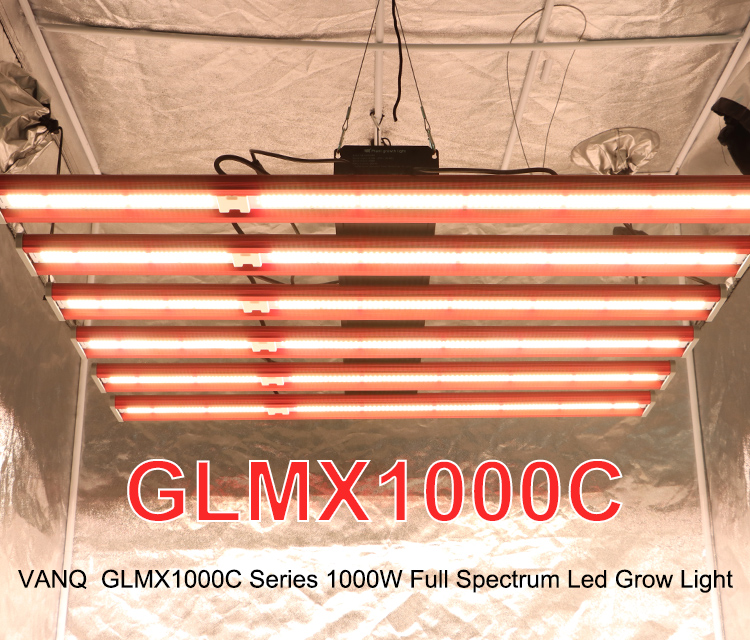In indoor cannabis cultivation, choosing the right lighting is very important. It is the first step to ensure a good harvest of cannabis. Lighting can create the most ideal cultivation conditions for cannabis. Good lighting can distinguish between withered and low-yielding cannabis plants, and Strong, healthy marijuana. Therefore, it is important to choose the right lighting system. Here, we will tell you all about indoor cannabis cultivation lighting.
In nature, as time goes by, marijuana plants need sunlight and seasonal changes to start blooming, and they enjoy the more light time. Therefore, the purpose of indoor growth lighting is to mimic the natural growth conditions of cannabis. For this, replace the sunlight with a suitable lamp, which provides the necessary energy for the cannabis plant and determines its cycle.
The number of hours of light and darkness in a day must be adjusted according to the growth period of the plant. During the growth period, the cannabis plant needs 18 hours of light and 8 hours of absolute darkness, while during the flowering period, the time of light is reduced to 12 hours.
On the other hand, the color of lighting is also very important in indoor growth, because it must imitate the correct color in order for us to obtain a good yield. During growth, hemp requires blue light (450-500nm), and during flowering, it is recommended to use a redder color (610-750nm).
However, light not only affects intensity and color. The various types of lighting radiate different temperatures. The most commonly used power is 400W and 600W. But be careful, because more is not always better: in tight spaces or in hot climates, things can be different.
As for the different types of lighting that can be used for indoor planting, sodium lamps, LEC kits, and LED lighting stand out.
Before introducing these lights, when we choose the type of lighting, we need to consider the following factors before deciding which type of lighting is suitable for our interior:
1. Power: In order to obtain the best yield of indoor crops, you have to consider the luminous power required for lighting. This decision will directly affect whether your cannabis harvest is greater than your expenditure. More power means you use more electricity, and it also leads to higher electricity bills. The most commonly used power levels are 400w and 600w bulbs, and related ballasts.
2. Heat: The more wattage, the higher the output, but this also requires more heat. If your planting area is not large, or you live in a warm climate, then this may be a problem. Of course, some types of lighting devices emit much less heat, but their disadvantages are that they are expensive and generate lower revenue.
3. Space: The amount of space that must be handled is another factor to consider. If this is limited, you will have to remember that it will heat up more easily, so you will want to avoid the bulb emitting too much heat. In addition, in a small space, low-power lighting can meet your needs.
4. Spectrum: Depending on the stage of discovery of the cannabis plant, the grower needs one or another spectrum. For example, marijuana plants need blue light during the growth phase and red during the flowering season. This is because the red tones can better mimic the sunlight that appears in the autumn months (when hemp is naturally blooming outdoors).
High pressure sodium (HPS) lamp

This kind of lighting is usually used mostly indoors. It can be used in the vegetation stage and flowering stage.
Although it is an ancient technology, it has proven to be one of the most effective technologies in development over the years. If it grows well, under the right conditions, the plants will grow vigorously and can achieve very good yields.
However, there are some aspects to consider: the cost of light and heat dissipation.
Light consumption cost:
Compared with LEDs, sodium or halide bulbs consume a lot of wattages, so you shouldn’t be surprised if your electricity bill goes up.
The most widely used bulbs are 250W, 400W, 600W, and up to 1,000W.
Heat dissipation:
To avoid overheating the space, fans and air extractors, cooling pipes and other components can be used. Please also remember to leave the ballast outside the growth chamber as it will emit a lot of heat.
This kind of light emits a lot of heat, which is good when it is cold, but it becomes complicated in summer or in a narrow space.
For small spaces (such as 40x40), this kind of bulb is not recommended because it is difficult to dissipate heat.
Implementing sodium systems is cheaper than LEDs. In addition to the bulb, you must also buy a ballast. We recommend that it is dimmable and has a reflector.
LED lighting

The characteristic of LED is that it does not lose energy when emitting light, so it is more efficient. On their own, they cannot provide enough energy, so panels with several groups are used.
One of the benefits of this lighting time is that the spectrum can be adjusted according to the stage of the plant (for example, blue light for growth and red light for flowering).
The advantage of LED is that it will not increase your electricity bill. However, you must keep two things in mind.
The initial investment will be greater than sodium, and the consumption will below:
The production will amortize the investment in several crops by saving electricity. Remember, the panel will last for several years, 50,000 hours.
They do not heat up:
This is ideal for growing indoors in summer or temperate climates, but in winter and very cold places, you will need another medium to increase the temperature in the growing room.
Sodium LED combination
If you have enough space and want to increase the temperature, you can combine LEDs and sodium. In this way, you can reduce your electricity bills, and the plants will be at the right temperature, and by combining the two systems, you will get the ideal productivity.
I hope this article will allow you to choose the lamps that suit you and wish you a rich harvest.























